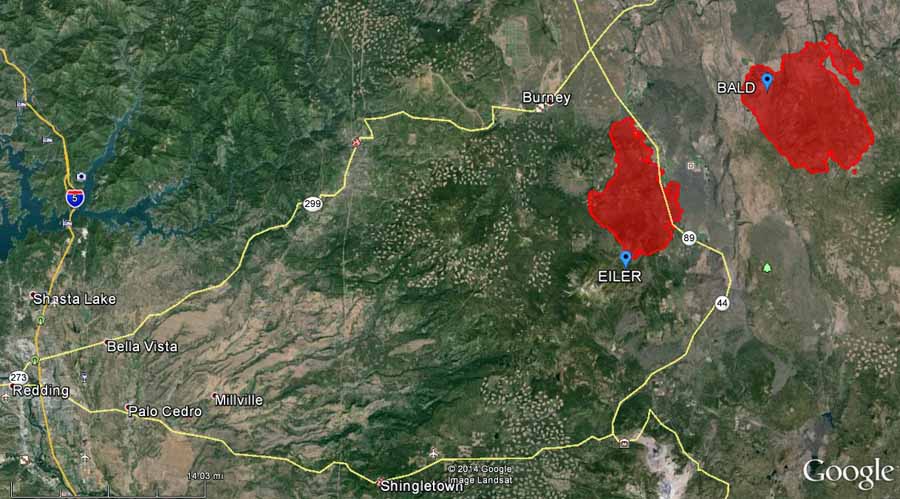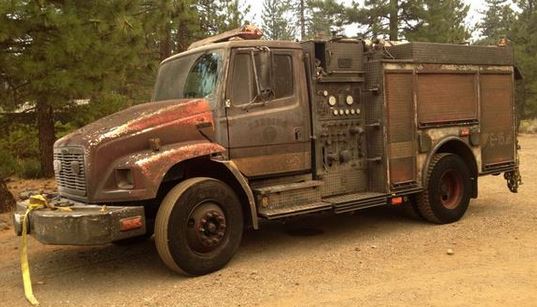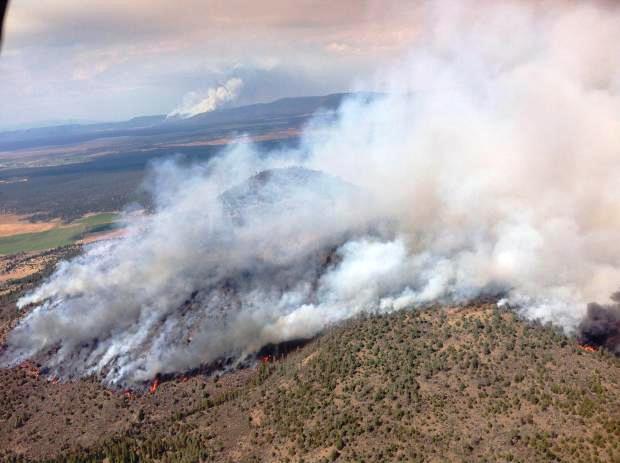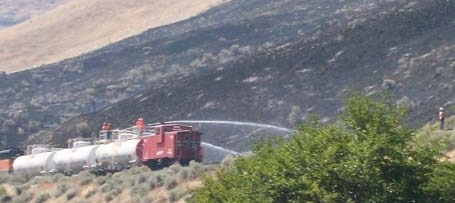California: Two fires east of Redding double in size
Two fires about 40 miles east of Redding, California doubled in size on Saturday. These fires are part of the reason the number of burned acres in California's National Forest has quadrupled since Wednesday.
The Eiler and Bald Fires were both very active with each devouring an additional 16,000 to 17,000 acres.
Eiler Fire
The Eiler Fire, 40 miles east of Redding and 4 miles southeast of Burney, has blackened 23,000 acres. On Saturday it was very active on the north, southeast, and west sides, moving onto the east slope of Burney Mountain. Evacuations have been issued for Johnson Park, Cassel, Big Eddie Estates. An advisory has been issued for the town of Burney. The fire has crossed Highway 89 which remains closed from the junction of Hwy 44 and 89 north to Hwy 299.
The fire behavior was described by firefighters as "running, torching, and long range spotting, with rapid rates of spread downhill to the north and east."
An engine from the Redding Fire Department was damaged in the Eiler Fire.
Bald Fire
The Bald Fire is 52 miles east of Redding, 13 miles east of Burney, and 7 miles east of the Eiler Fire. It doubled in size Saturday, spreading through drought-affected six-foot tall brush and patches of timber, growing from 17,000 acres to 34,000. Late on Saturday it was exhibiting extreme fire behavior, most actively spreading on the south and southwest sides.
BNSF Railroad is providing a two-car fire train to assist with fire suppression along the railroad tracks. In 2010 we wrote about fire trains. Here is an excerpt:
In the United States firefighting trains are frequently called water cars or fire trains. Usually a fire train consists of an engine, several tank cars carrying 7,000 to 14,000 gallons of water each, and sometimes a caboose for transporting the employees or firefighters to operate the fire equipment. Most fire trains carry an assortment of fire equipment including hose reels, hand tools, nozzles, and hose. Sometimes each tank car will have it's own pump and master stream nozzles, and they often have the ability connect the tank cars together with hoses so that the water can be shared between the cars. When a fire train has an engine at each end, the train can be split so that both ends of a trestle can be protected at the same time.
--
Read my blog at http://eclecticarcania.blogspot.com/
My Facebook: http://www.facebook.com/derkimster
Linkedin profile: http://www.linkedin.com/pub/kim-noyes/9/3a1/2b8
Follow me on Twitter @CalDisasters
__._,_.___




No comments:
Post a Comment